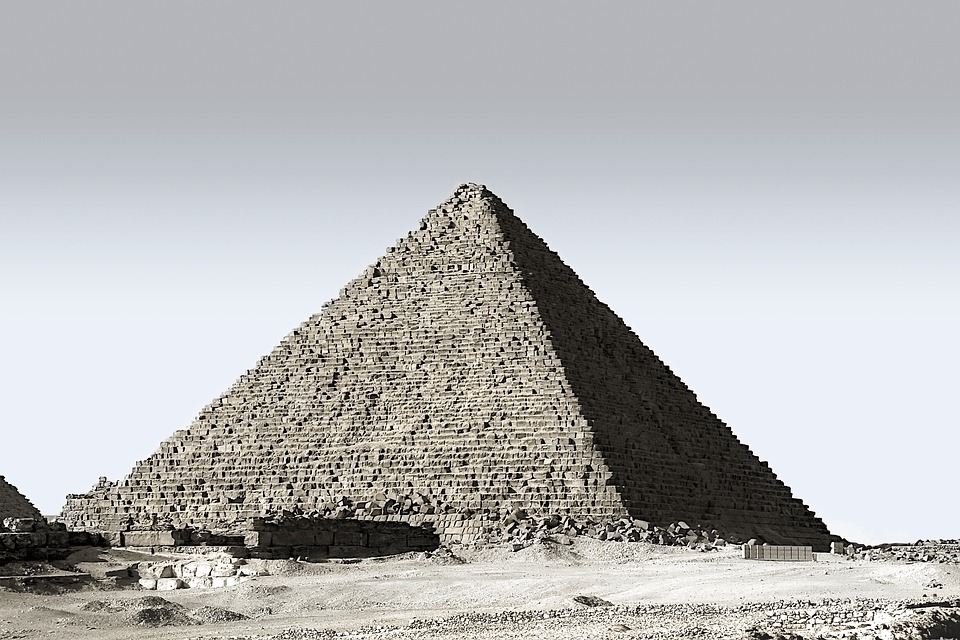Archaeological discoveries, as people have learned over the years, are sometimes done by accident or by chance through various means. One researcher claims she has found the lost pyramids of Egypt back in 2012, just by studying Google Earth images.
Researcher Angela Micol was studying Google Earth for 10 years when she made the discovery back in 2012. Micol pointed out two areas located along the Nile basin and set 90 miles apart from each other and both have mounds that formed an unusual shape. The first formation is along the Nile in Upper Egypt, while the second formation was 90 miles north with a four-sided shape measuring 140 feet in diameter. One particular site showed a triangular plateau measuring 620-feet wide as well, which is nearly three times the size of the pyramid of Giza.
Micol shared her findings on Google Earth Anomalies at the time. “Upon closer examination of the formation, this mound appears to have a very flat top and a curiously symmetrical triangular shape that has been heavily eroded with time. The second site has a distinct square center, which is very unusual for a mound of this size and it almost seems pyramidal when seen from above.”
The researcher later added in an interview with Sky News in the same year that there were three smaller mounds that looked similar to the diagonal alignment of the Giza pyramids. Micol noted that more research is needed to truly identify what the mounds were or if they are really the lost pyramids. Her claims were met with skepticism, with some egyptologists saying that the mounds Micol had seen were just formations known as buttes.
Meanwhile, in 2004, researchers from Boston University headed by archaeologist Kathryn Bard were digging at a site near the Wadi Gawasis harbor in Egypt which was near the Red Sea when they unearthed ancient ships. What made the discovery even more interesting was that the ships did not look like it was made simply for local transport, but for the open sea. They also found ancient cargo boxes that lined the rigging. The find also reveals that it came from the land of Punt, a location many experts believed was a myth until the discovery.
“We found pieces of ancient ships, 26 oil papyrus rope rigging from an ancient ship. We excavated 43 discarded cargo boxes, and why do we know they were cargo boxes? Because two of them were inscribed like a package label with ‘the wonderful things of Punt’” revealed Bard.



 FDA Adds Fatal Risk Warning to J&J and Legend Biotech’s Carvykti Cancer Therapy
FDA Adds Fatal Risk Warning to J&J and Legend Biotech’s Carvykti Cancer Therapy  Lab-grown meat: you may find it icky, but it could drive forward medical research
Lab-grown meat: you may find it icky, but it could drive forward medical research  Tabletop particle accelerator could transform medicine and materials science
Tabletop particle accelerator could transform medicine and materials science  SpaceX Starship Test Flight Reaches New Heights but Ends in Setback
SpaceX Starship Test Flight Reaches New Heights but Ends in Setback  Neuren Pharmaceuticals Surges on U.S. Patent Win for Rare Disorder Drug
Neuren Pharmaceuticals Surges on U.S. Patent Win for Rare Disorder Drug  Trump Signs Executive Order to Boost AI Research in Childhood Cancer
Trump Signs Executive Order to Boost AI Research in Childhood Cancer  NASA and Roscosmos Chiefs Meet in Florida to Discuss Moon and ISS Cooperation
NASA and Roscosmos Chiefs Meet in Florida to Discuss Moon and ISS Cooperation  NASA Astronauts Wilmore and Williams Recover After Boeing Starliner Delay
NASA Astronauts Wilmore and Williams Recover After Boeing Starliner Delay  CDC Vaccine Review Sparks Controversy Over Thimerosal Study Citation
CDC Vaccine Review Sparks Controversy Over Thimerosal Study Citation  Ancient Mars may have had a carbon cycle − a new study suggests the red planet may have once been warmer, wetter and more favorable for life
Ancient Mars may have had a carbon cycle − a new study suggests the red planet may have once been warmer, wetter and more favorable for life  SpaceX’s Starship Completes 11th Test Flight, Paving Way for Moon and Mars Missions
SpaceX’s Starship Completes 11th Test Flight, Paving Way for Moon and Mars Missions  Kennedy Sets September Deadline to Uncover Autism Causes Amid Controversy
Kennedy Sets September Deadline to Uncover Autism Causes Amid Controversy  Is space worth the cost? Accounting experts say its value can’t be found in spreadsheets
Is space worth the cost? Accounting experts say its value can’t be found in spreadsheets  Cogent Biosciences Soars 120% on Breakthrough Phase 3 Results for Bezuclastinib in GIST Treatment
Cogent Biosciences Soars 120% on Breakthrough Phase 3 Results for Bezuclastinib in GIST Treatment  Neuralink Expands Brain Implant Trials with 12 Global Patients
Neuralink Expands Brain Implant Trials with 12 Global Patients 































